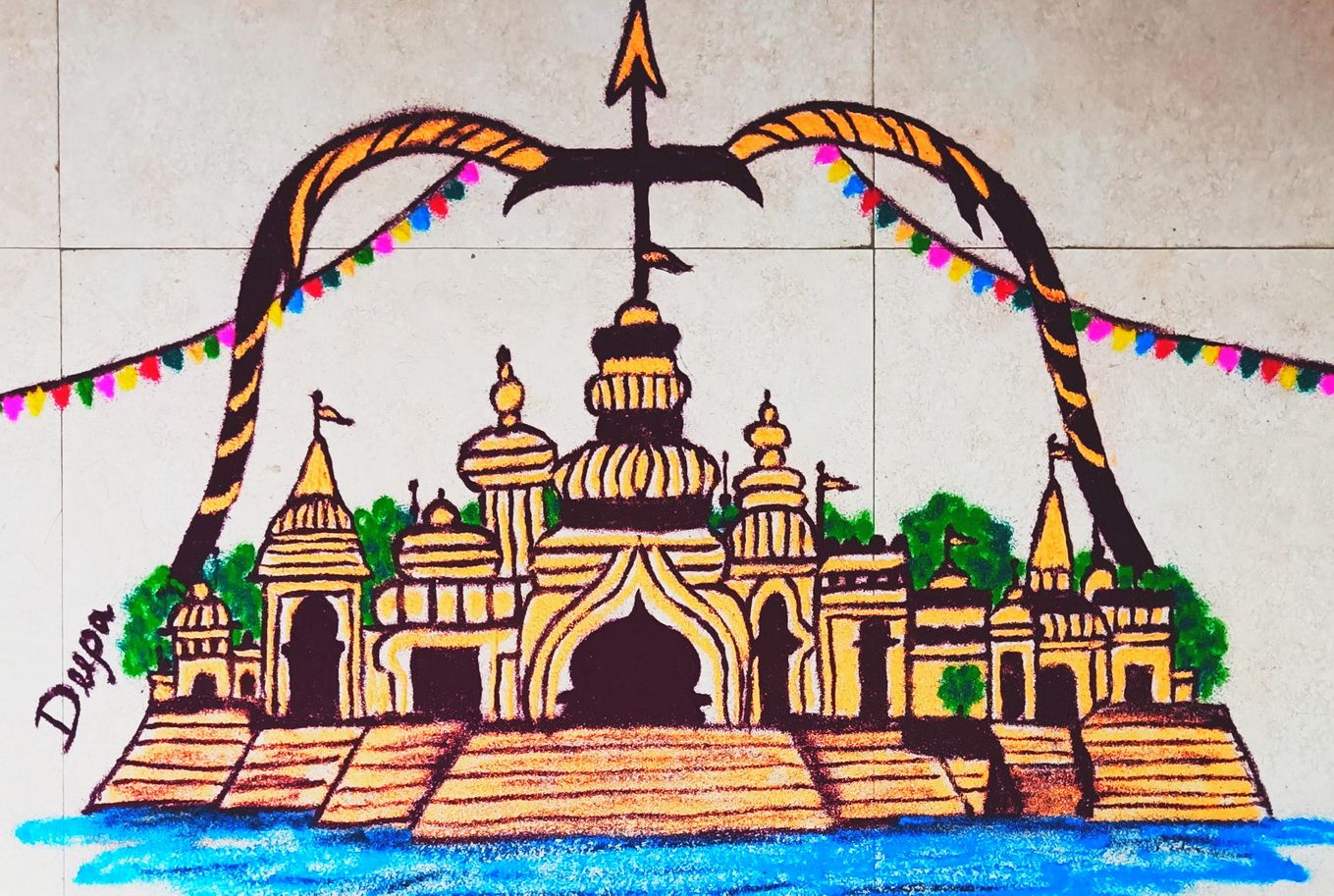Kolam to celebrate the birth anniversary of god Rama
Bow, arrows, and padukas as symbols of Rama in kolam. He is adorned with all virtues, exceptional strength, and incredible archery skills. Janaka, the king of Mithila had decided that the king who could lift the bow would marry his daughter Sita.

Ram Navami is an annual Hindu festival that celebrates the birth anniversary of god Rama, the seventh incarnation of Vishnu, the preserver and protector of the universe. It takes place in the Tamil month of Chittirai (mid-April to mid-May), and the celebrations are particularly important for the Vaishnava communities in India and abroad. Rama the blue-skinned prince, with a quiver of arrows on his back, a bow, and a single arrow in his right hand, is the hero of the Ramayana epic alongside Ravana, the demon-king of Lanka. Although the legend of Rama has many versions reflecting the ideologies of their time, the epic's blend of adventure, religious and philosophical teaching has always served as a guide to morality, virtue, devotion, and state duty. Sometimes it is its literary and linguistic value that has been emphasised, as in the case of the Kerala "Adhyatma Ramayana", written in the 16th century by the poet and linguist Thunchaththu Erutacchan. This centuries-old saga also permeates contemporary culture and, on a darker note, has been fuelling the movement of fundamentalist Hinduism in recent years.
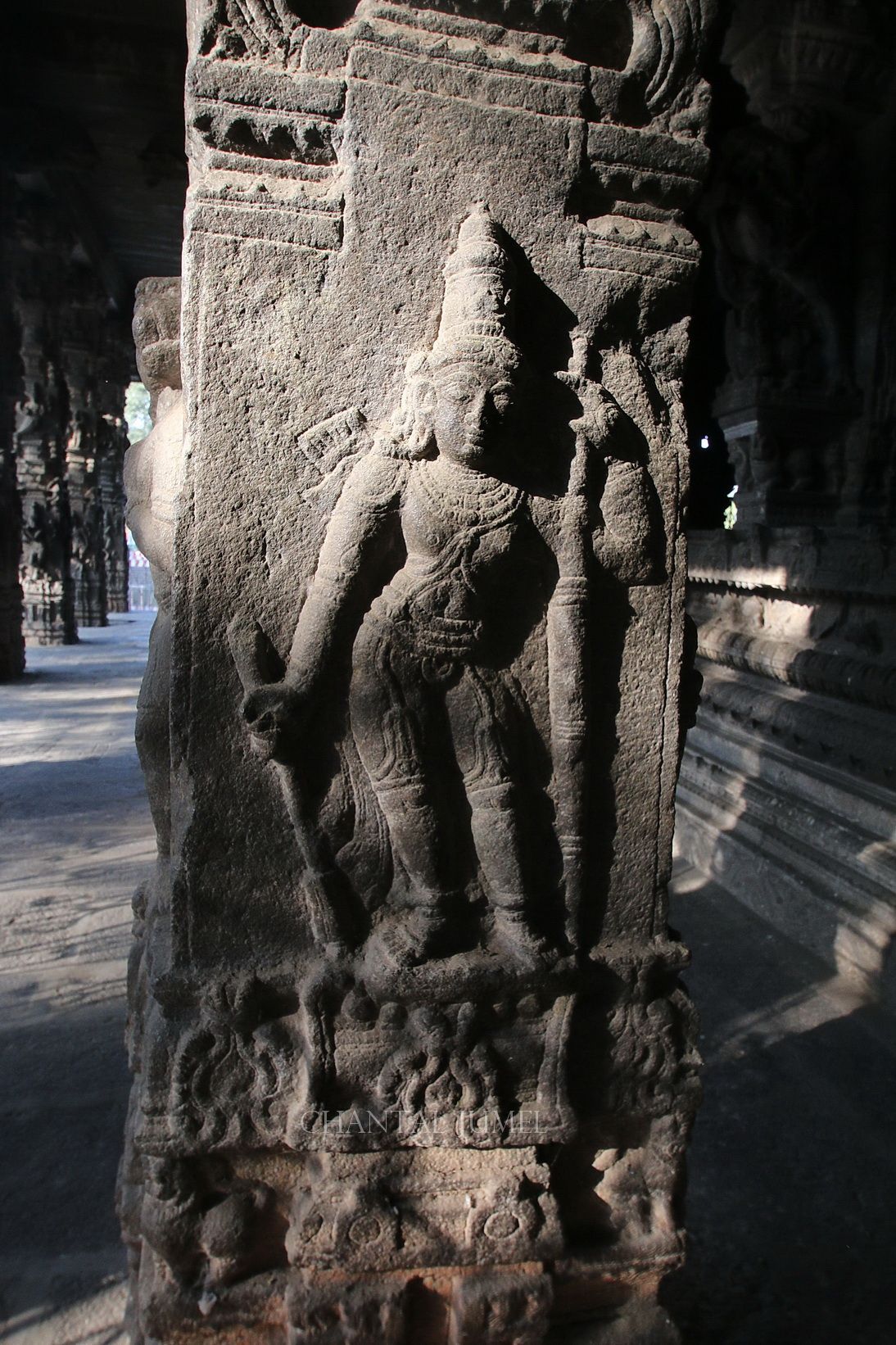
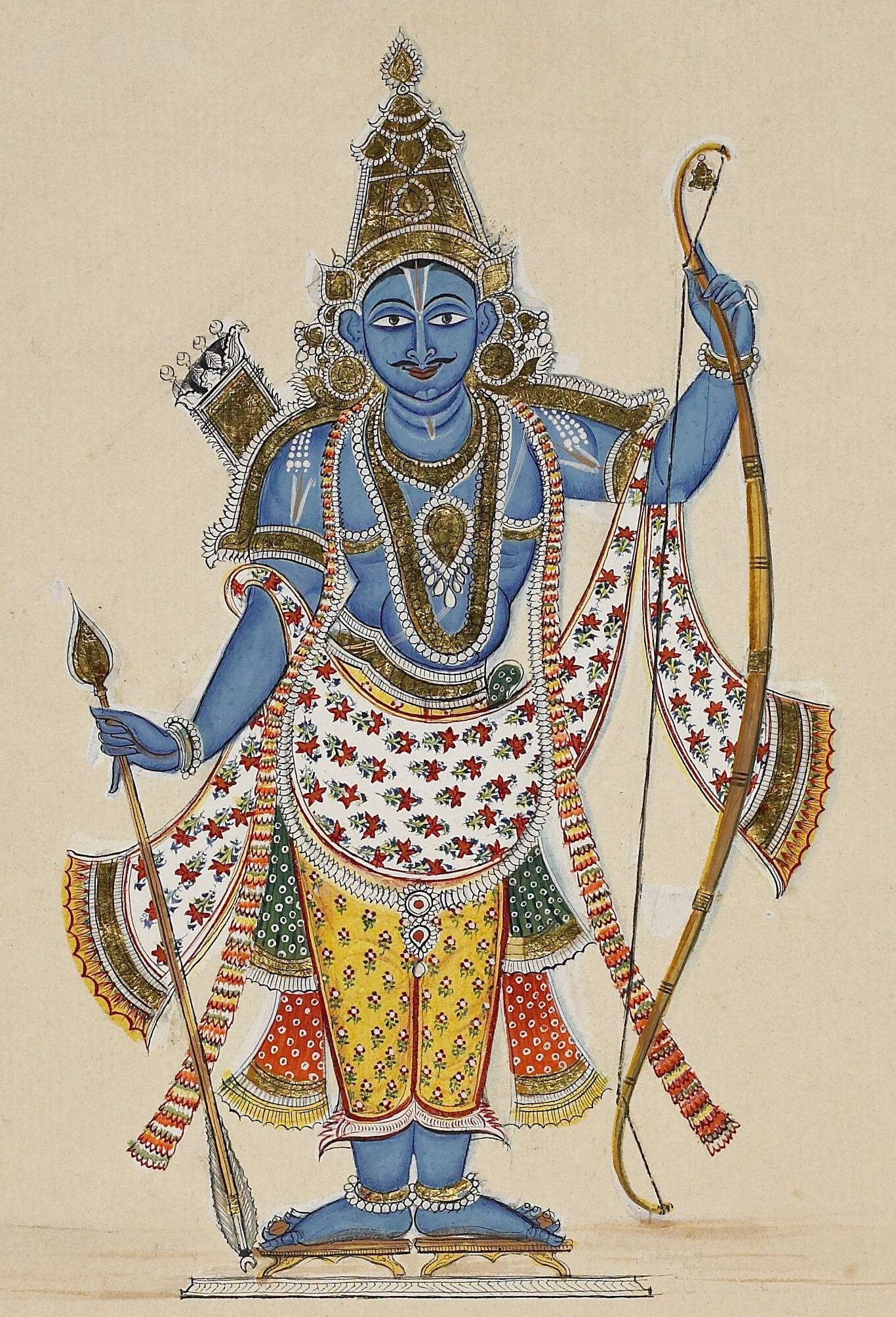

In the version of the legendary poet Valmiki, Rama is the son of Dasharatha, king of Ayodhya, and Queen Kausalya. He was to succeed his father on the throne, but the second wife Kaikeyi, mother of Bharata, demanded that her son ascends the throne, and that Rama be exiled to Dandaka Forest for fourteen years. Distressed by this decision, but true to the promise he had made to his wife, the king reluctantly agrees. Rama, Sita, his wife, and Lakshmana, his half-brother leave together for the forest and settle in a hermitage.

Meanwhile Ravana, the king of Lanka enraptured by Sita’s beauty, sends Maricha, a demon in the form of a golden deer. Enthused by the beautiful creature, Sita sends Rama to capture it, but the prince senses a demon and kills the doe. As it collapses, revealing its evil nature, the beast utters a cry imitating Rama's voice. Sita, distraught, sends Lakshmana to his rescue, but he insists that she stays in the cottage and not cross the protective line he has drawn around the house. While she remains alone, Ravana, in the guise of an ascetic begging for alms, approaches Sita. Confident, she steps out of the magic circle, and it is then that the powerful demon abducts her and carries her on a celestial chariot to his palace in Lanka. Rama and Lakshmana, aided by an army of warrior monkeys of whom Hanuman, an ardent devotee of the prince, set out to rescue her. In a spectacular chariot duel, Rama kills Ravana, the demon with ten heads and twenty arms. After fourteen years of exile and the death of his father Dasharatha, Rama is crowned and rules Ayodhya for many years.


Bow, arrows, and padukas as symbols of Rama in kolam
Rama, adorned with every virtue, enjoys exceptional strength and incredible skill in archery. Janaka, the king of Mithila had announced that only a king capable of lifting and bending the bow presented to his ancestors by God Shiva, would marry his daughter, Princess Sita. Rama accepted the challenge, lifted the bow without the slightest effort and broke it. On the occasion of Ram Navami, a number of kolam incorporate these two symbols.


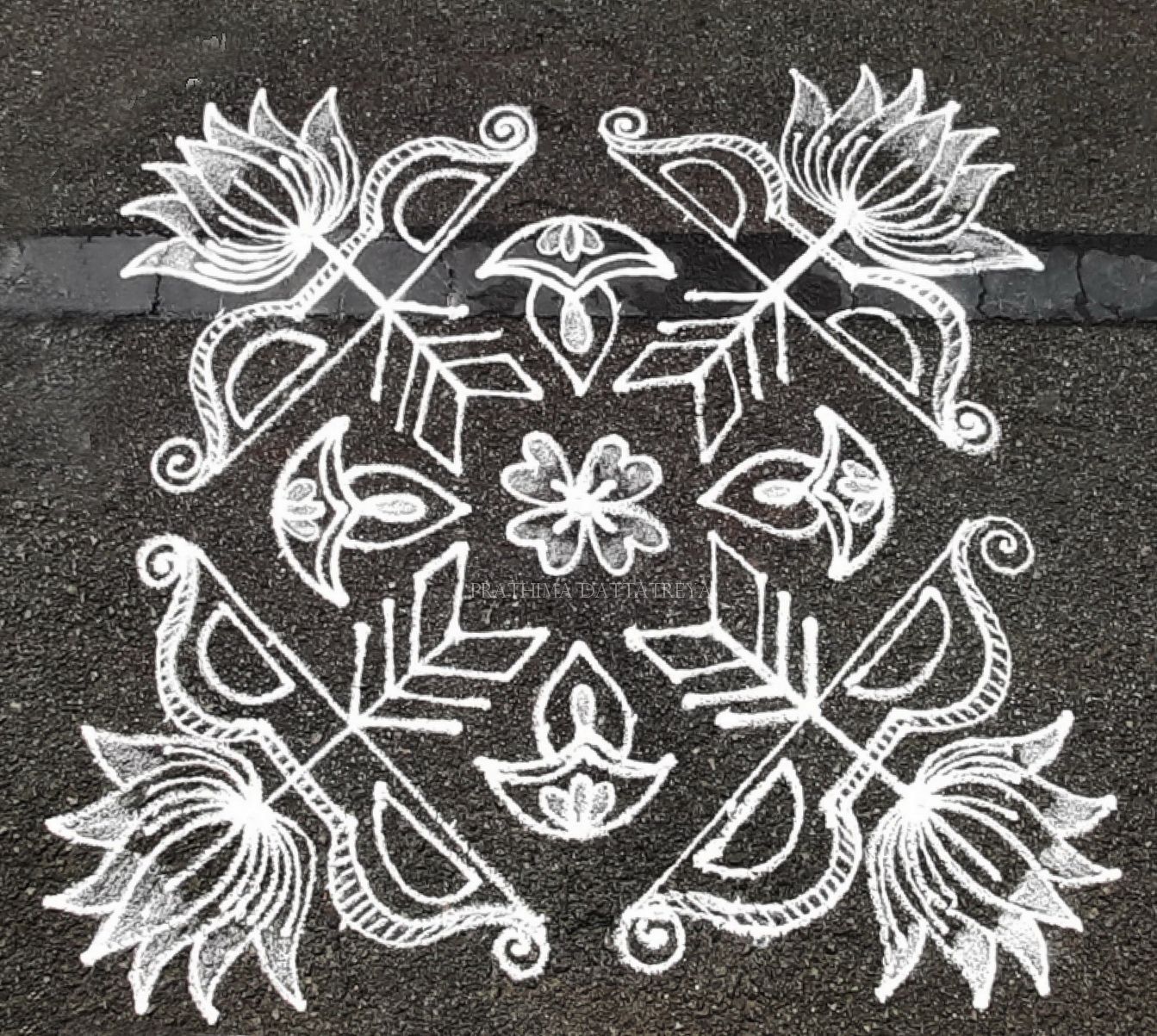
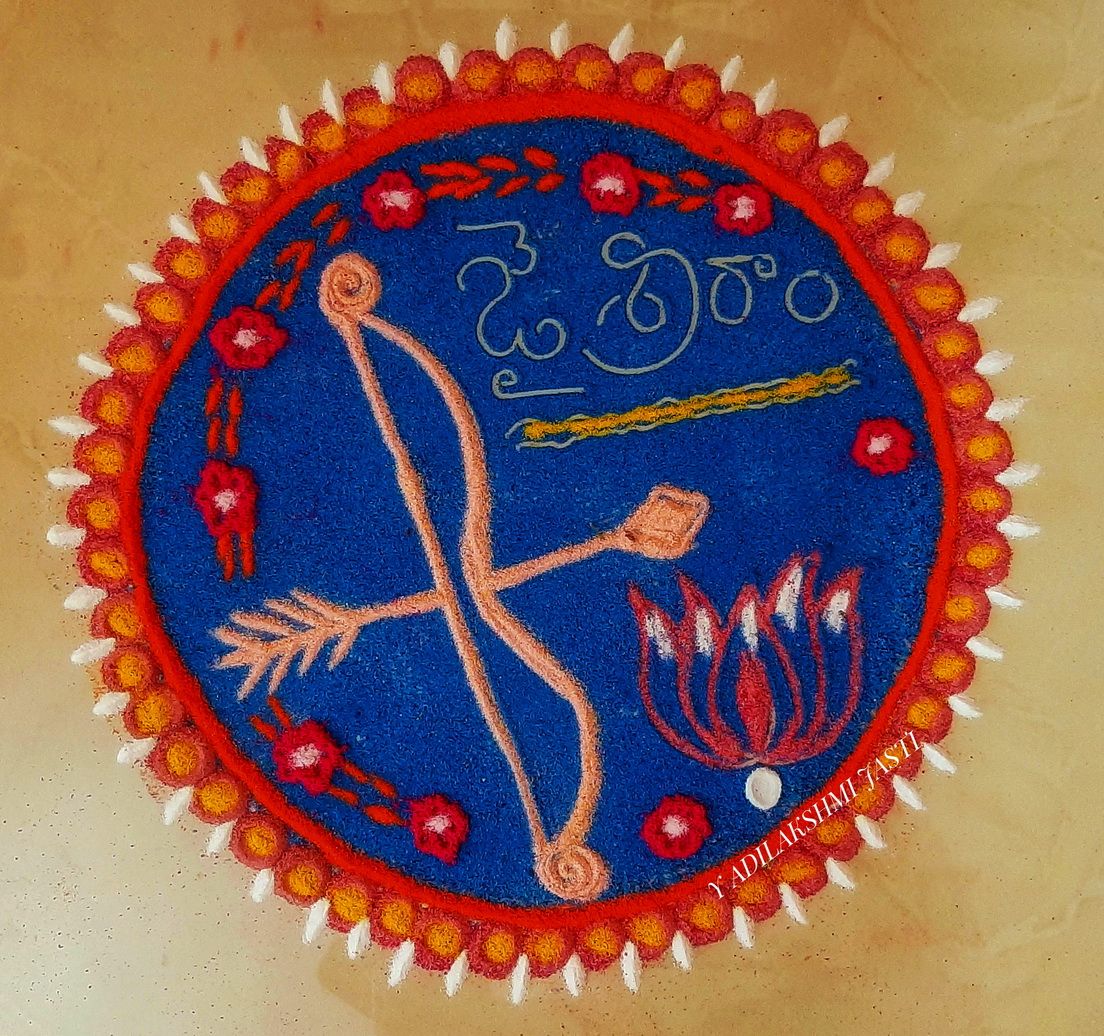
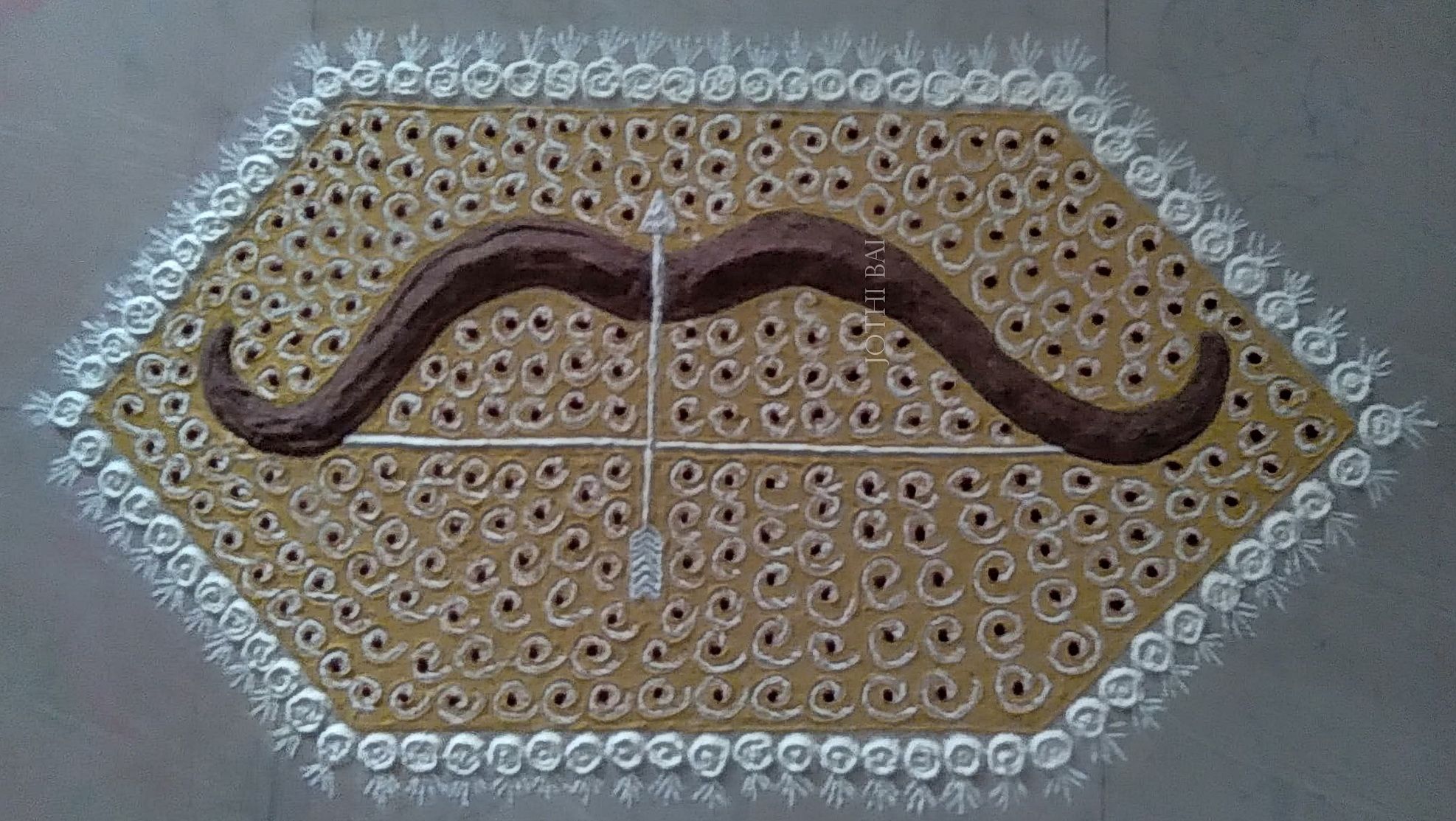
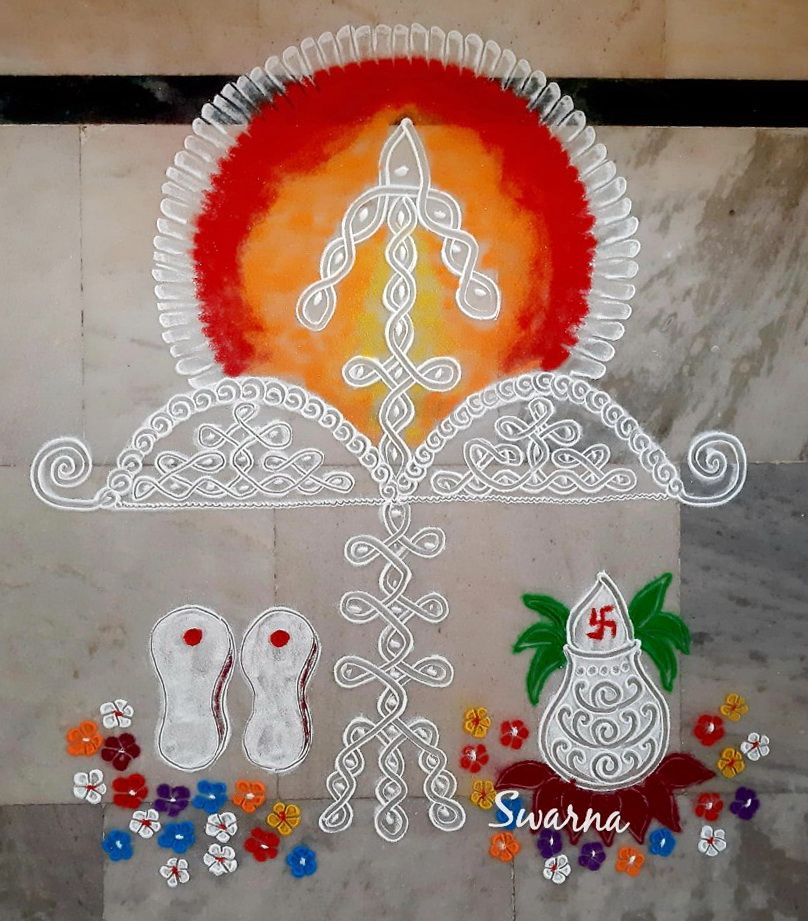
Padukas (traditional wooden sandals) is another design that finds its place in kolam on Ram Navami. These sandals worn by ordinary people and ascetics also refer to the footprints of the deities who are worshipped in their symbolic form. In the Ramayana, Bharata, son of Kaikeyi, refuses to be crowned in place of Rama and decides to visit him in the forest, begging him to return to Ayodhya. Rama replies that he will return only after completing the fourteen years of exile. Bharata therefore returned to Ayodhya with his brother's sandals and placed them on the throne as a sign of respect. He thus governs the kingdom as regent, without being crowned or sitting on the throne.
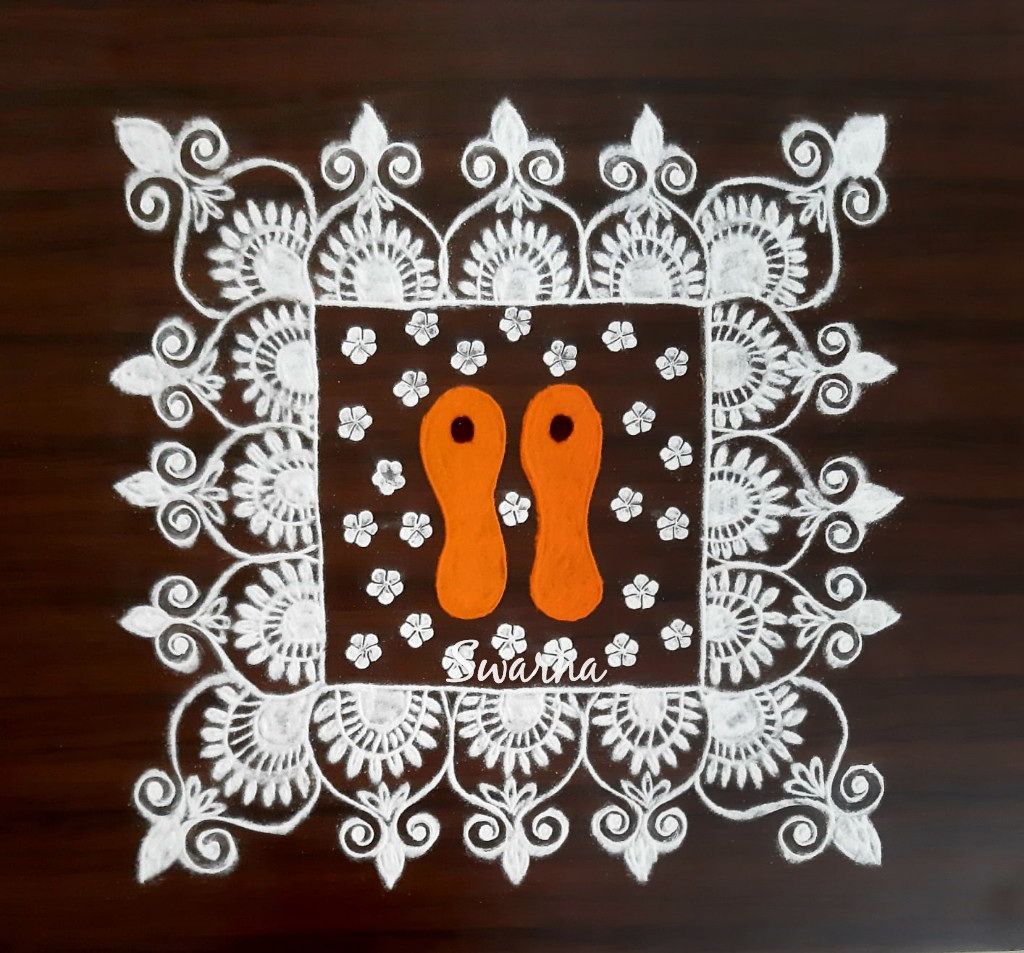


“Ramayan,” the television series on the Ramayana epic
In the 1980s, when I lived in Kerala, the television series “Ramayan” captured India’s attention every Sunday morning. People would gather to watch the serial. Those who did not have a television would rush to the houses that had one. People made sure they had a battery or a generator in case of a power cut. Huddled together, there was no longer any concern about caste. In some families, a ritual bath was taken, the television was decorated with flowers garlands, incense was burnt, and people prostrated to the first images before settling down to watch the mythical saga of god Rama. I, who had learnt the names and stories of the gods and goddesses from the calendar pictures and in the "Amar Chitra Katha" comics I bought every week, I could not resist this general excitement, or should I say the ambient fervour. Of course, I could never understand Rama’s cruelty to Sita at the end of the Lanka battle against Ravana. There were rumours in the kingdom that Sita had been unfaithful for spending time in another man's house. Sita, though rescued, had to undergo the ordeal of fire to prove her chastity. In the version of the "Adhyatma Ramayana" written by the Kerala poet Erutacchan, Rama is not only an incarnation of Vishnu but the personification of the Absolute. Sita abducted by Ravana is only an illusion and by being killed by Rama, the demon-king Ravana is freed forever from the cycle of birth and rebirth.
Vibhishana turned to Raghuttama: "No one has committed such outrage as he (Ravana), is it proper to perform the last rites for such a great sinner? "The demon-lord received my arrow in battle, all his sins are gone. Up until his last moment his only thought was of me. He has attained moksha - perform his last rites!"
The Adhyatma Ramayana, "the Book of War", translation from Malayalam by Reade Wood, 1998
